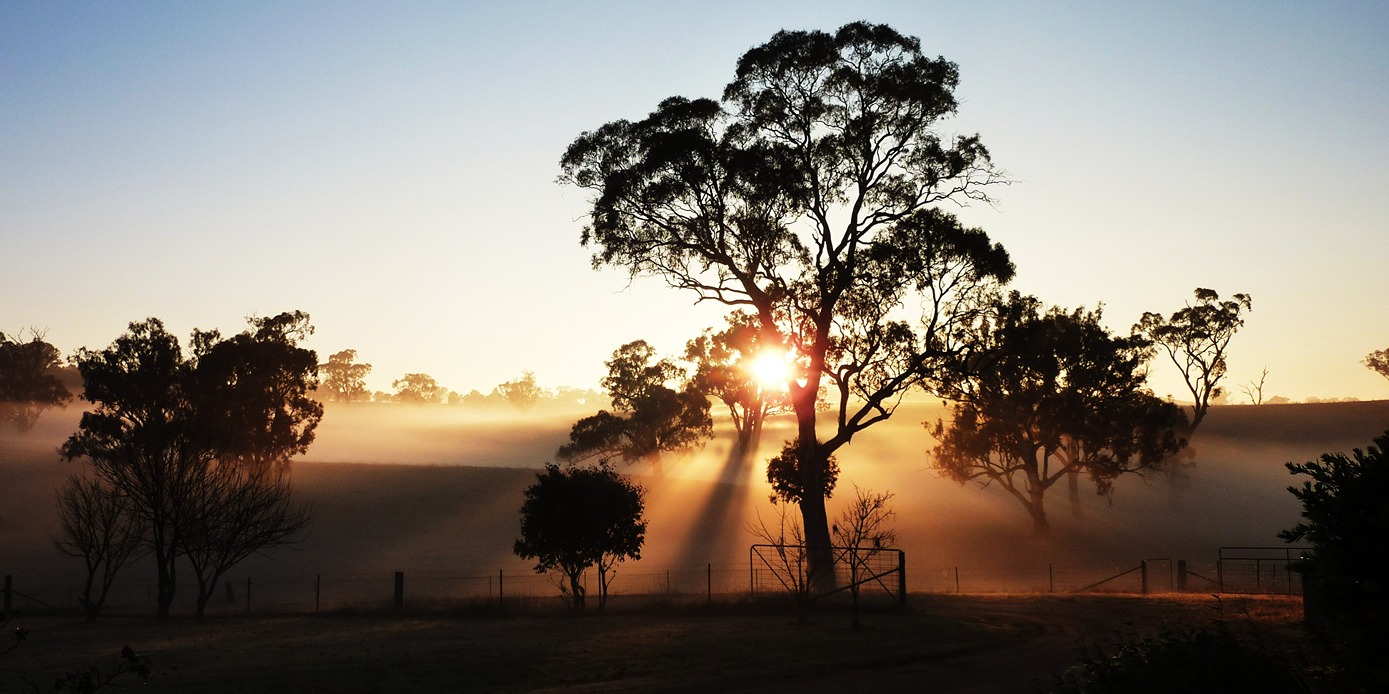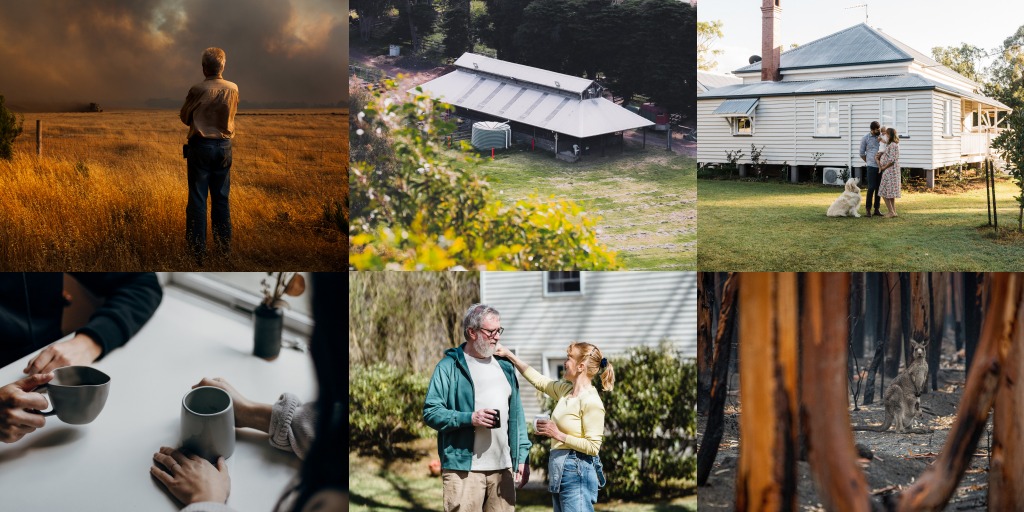Key points
- Buildings affected by climate change in NSW include homes, businesses, shops, services, education and health institutions, industrial facilities and more.
- These buildings provide shelter, amenity and support delivery of services to the NSW communities and businesses, and play an important role in our economy.
- Many of these buildings are designed to suit historical weather conditions, and may not perform well under the current and future impacts of climate change.
- Action is needed to reduce the impacts of climate change on NSW buildings. This includes improving policies and procedures, adapting current buildings to climate change and planning for resilient buildings.
- NABERS is a national initiative managed by the NSW government that measures the energy efficiency, water usage, waste management and indoor environment quality of a building or tenancy and its impact on the environment. Incorporating ecologically sustainable development principles into building design can make buildings more resilient to climate change and also reduce the impacts that buildings have on the climate.
The importance of buildings in NSW
NSW buildings provide shelter and services for its people, as well as support people, communities and businesses to thrive. Buildings range in size, age, materials and function, and include:
- homes and accommodation
- commercial buildings such as shops and workplaces
- education institutions such as schools and universities
- health services including hospitals, general practices and specialist clinics
- industrial services such as factories and warehouses
- places of worship, ceremonies and religious practices
- recreational facilities including sports stadiums, restaurants and movie theatres.
Ensuring our buildings work for NSW’s people, businesses and the environment is important for healthier communities, our economy and natural environments.
How buildings are affected by climate change in NSW
Most buildings in NSW were designed to suit historic climates. Climate change will affect these buildings in various ways during their design life. This will have flow-on effects to the people and businesses who use them.
Climate change is causing increased temperatures across NSW, leading to more heatwaves and increased bushfire risk.
Many NSW buildings were not designed to withstand extreme heat. As a result, air-conditioning systems are used in most buildings to control temperature. This puts a large demand on electricity grids to supply enough power, and can even lead to power failures such as the 2017 heatwave power failures across NSW, Queensland and South Australia. Increased energy use results in higher costs, and also contributes to climate change as greenhouse gases are released when non-renewable energy sources are used.
Buildings are designed to meet certain standards for occupants. This includes their ability to maintain safe and comfortable temperatures. Dwellings designed on past and current climate data are likely to be compliant with these standards now, but may not be able to maintain safe and comfortable temperatures when exposed to increased temperatures of future climates.
Power failures can affect businesses and cause financial losses. During heatwaves, power failures disrupt cooling systems, putting people at risk of heat-related injury and death.
Higher temperatures also mean higher night-time temperatures, which will likely contribute to heat stress while sleeping and decreased productivity during the day. This is particularly true for built environments that are impacted by the urban heat island effect, such as Western Sydney and many regional cities and towns in NSW.
Higher temperatures are also contributing to more high fire weather days. This will increase the number of buildings at risk of bushfire. Building developments in bushfire-prone land need to be designed to meet certain standards, and implement bushfire protection measures to minimise the exposure and vulnerability to bushfire risks.
Less rainfall and increased temperatures also lead to more drought. Drought can cause the soils under homes to shrink and shift, and homes to sink. Dry conditions also impact water availability and increase the risk of dust storms. Buildings need to consider these increased threats to ensure they continue to be functional and protect occupants.
Sea level rise will affect buildings in coastal areas of NSW in various ways:
- Rising sea levels and inundation of low-lying areas which may include houses, businesses, agricultural and industrial buildings. In some areas this inundation will be more regular or permanent. Many areas will be exposed to inundation during higher tides and storm surges.
- Coastlines can erode as waves reach further up the shore and encroach on public and private property. This was seen in 2020 when up to 25 metres of beach was washed away at Collaroy and Narrabeen north of Sydney.
- As sea levels rise, more buildings will be at risk of erosion and direct wave damage.
Climate change is projected to cause more extreme weather events, which can produce damaging winds and heavy rainfall. These events can damage buildings, especially those that were not designed to withstand these impacts:
- Buildings in flood-prone areas are often designed to withstand major floods (up to the 1% Annual Exceedance Probability), for example, by being raised off the ground. Heavier rainfall events can cause floodwaters to rise above these levels – buildings in these areas tend to be built closer to the ground, which puts them at risk of higher floodwaters.
- Tropical cyclones are projected to occur less often but be more severe, and affect regions further south. Many NSW buildings are not designed to withstand the severe winds of tropical cyclones, and are at risk of severe wind damage.
- Hillslope erosion in NSW is predicted to increase by 7–21% in the next 60 years. The areas most affected are those with already high erosion risk, namely the Great Dividing Range, Central Coast, North Coast and Hunter regions.
Adapting to the impacts of climate change on buildings in NSW
There are several ways NSW can adapt to the impacts of climate change on its buildings.
Planning and policies
The NSW Government is improving the policies and processes related to our built environments. These improvements will make it easier for developers, councils, planners and designers to create buildings which contribute to healthy, sustainable and prosperous built environments.
The impacts of climate change should be considered in all building designs and plans, from small-scale home owner–builder projects to community-level facilities such as hospitals.
Making buildings more resilient
Buildings can be made more resilient to the impacts of climate change, by retrofitting existing buildings, planning better future buildings, or by making changes to the surrounding environment:
- Making buildings more thermally efficient reduces the impact of increased temperatures and heatwaves.
- Incorporating resilient renewable power supplies and passive design helps avoid economic loss and heat-related injury and loss of life in the event of power failures during climate hazards such as heatwaves.
- Integrating green infrastructure with the built environment, such as increasing canopy cover and using green walls, can significantly decrease the impact of the urban heat island effect on buildings.
- Using more resilient building materials can reduce damage from more frequent and intense wind and storms, such as choosing roofing materials that will not be damaged by hail.
- Coastal regions can reduce the impacts of sea level rise by improving foreshores through revegetation, changing the built design and engineering of structures such as pier and pile footings and by reviewing planning zones to make sure flood-prone land is appropriately developed.
- Buildings in coastal areas can be built or retrofitted to make sure they can withstand severe winds that are expected from more extreme weather events and tropical cyclones.
- Buildings can be designed to have flexible uses, such as adapting a community centre to become an evacuation centre or shelter from extreme weather events.
Making buildings more environmentally sustainable
Buildings contribute a significant amount of NSW’s greenhouse gas emissions, through heating and cooling systems. By creating buildings using passive design and green cover, we can limit our use of heating and cooling systems to reduce our greenhouse gas emissions.
Related Information
Green Building Council Australia
Nationwide House Energy Rating Scheme (NatHERS)
YourHome: Australia’s guide to environmentally sustainable homes
Government Architect NSW - guides, manuals and advisory notes
Resilience and natural hazard risk – NSW Department of Planning Industry and Environment
Healthy Active by Design – Heart Foundation
Case studies

The Living Lab, located in a Lismore main street, is a design and research collaborative conceived following the floods of 2022, which wrought untold havoc on the Northern Rivers region.
Lake Macquarie City Council is trialling tidal gates to protect low-lying assets from tidal inundation, storm surges and extreme weather events.

The CRJO and its partners created the Bushfire-Resilient Housing Toolkit to reframe bushfire risk to help prepare and build more resilient communities.
